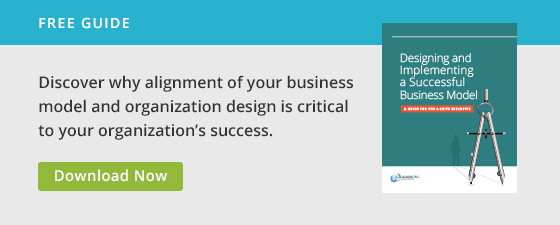How often do organizations implement changes developed during strategic planning sessions? While reports vary on the subject, the working reality is that many organizations feel completely overwhelmed with the amount of work they must do to achieve true transformation. How can we refocus our efforts to improve execution success?
Unfortunately, not implementing due to feeling over-planned is all too common. The best strategic planning sessions help identify misalignments or gaps between your strategic intent and your organization’s capabilities to execute. While necessary, the result of most strategic planning sessions is that you leave with a laundry list of goals that you must find room for on your already full plate. Rather than try to do everything at once and risk becoming overwhelmed, why not narrow your focus to no more than three activities/changes at a time? Further refining your focus will help you start implementing the changes faster, resist getting bogged down with the enormity of the efforts, and allow you to complete something rather than push things around trying to juggle activities.
I was recently working with a support function, and I was using one of our tools to help them prioritize their work based on their strategy. With an enormous amount of effort, the team boiled down 60-70 initiatives to the critical 15-20. When asked to select the top 3-4 to start working on, they simply could not do it. They said that their international partners and the board would not allow them to focus on only a few priorities but required that they tackle the top 15-20 initiatives simultaneously.
After further questioning, I found that there was a strong cultural expectation to cover everything that was in the plan and that saying “no” was unacceptable. The result was that the leaders spent more time reporting, preparing for, and attending meetings than actually working on and completing the initiatives. Because the cultural expectation was that you never said “no” to anything, the result was constant status meeting preparation and never ending initiative implementation.
Narrowing your focus does the opposite of the example above. It allows organizations to start implementing immediately and spend their time getting the work done. While some changes are too big to narrow down to three things, you can still benefit from the power of focus by creating a roadmap for completing a select number of strategic initiatives at a time.
So, what can you do if your organization has a cultural expectation that won’t allow you to only focus on the critical few?
- Put your foot down. If you are in a leadership position and able to do so, insist that the organization sharpen its focus on only a few initiatives. Don’t allow your employees to work on 8-10 objectives simultaneously. Instead, help create a culture of focus and only hold your employees accountable for three initiatives at a time.
- Work with what you have. If you are not able to put your foot down, focus and prioritize the resources that you do control on a certain number of things first. If you oversee 6 of 12 business initiatives, choose two or three and by mid-year refocus your attention on the next two or three.
- Reinforce focus. To create a new cultural expectation in an organization, you must overtly teach the principles but also reinforce them whenever possible. If you have a meeting or bring someone in your office and ask about eight things, you’ve reinforced the old culture. Live and model the new culture and focus every conversation on only two or three priorities.
- Run interference. If your organization struggles with focus and you don’t have the full support of senior leaders, you must be prepared to run interference when you and your employees don’t have answers for the status of all your assigned initiatives. When people ask about your initiatives that aren’t currently being worked on, you must be prepared to step in and say, “Thanks, but that’s not our focus right now.”
The power of focus can be truly transformative and extremely productive for an organization trying to implement change. For those who feel overwhelmed by organizational changes, try sharpening your focus.






